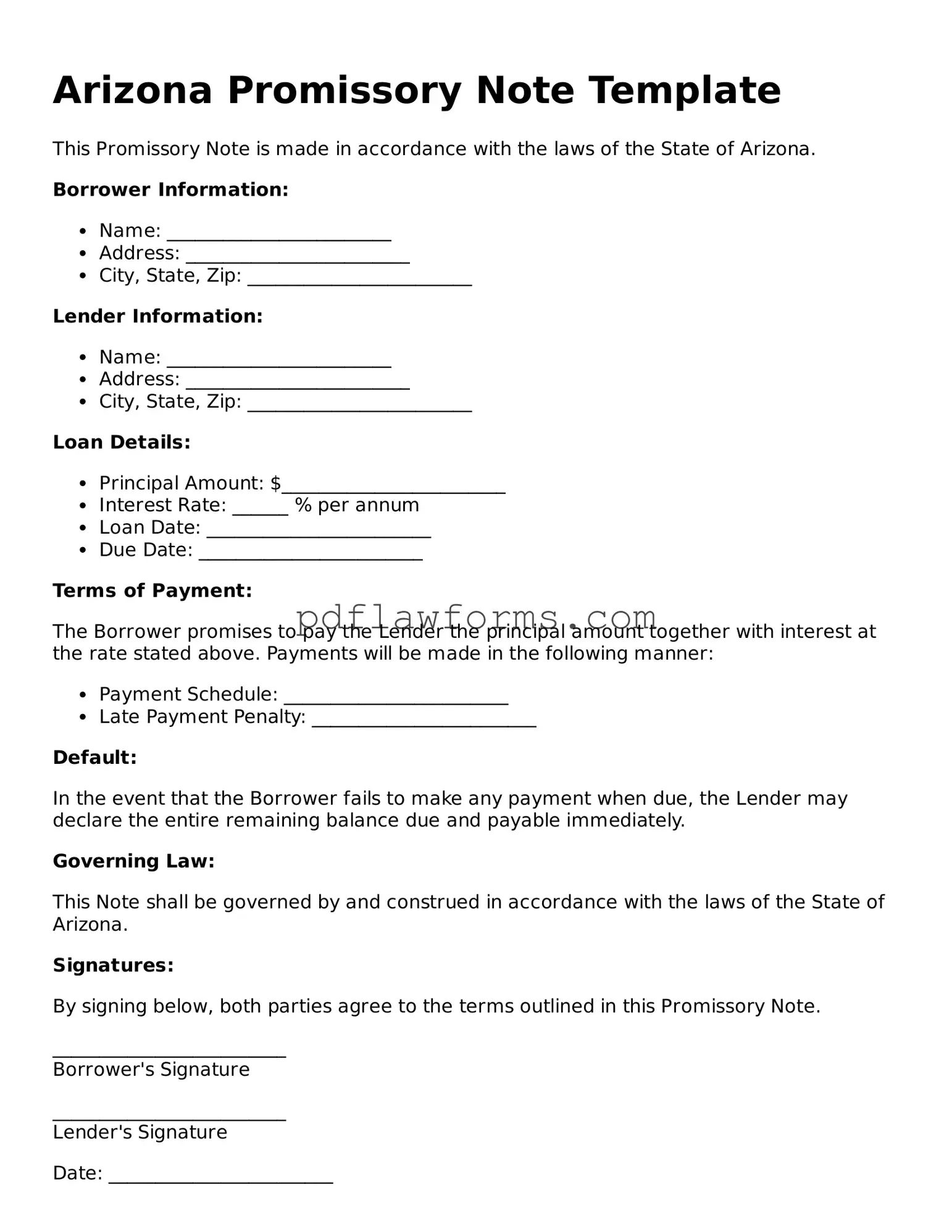Promissory Note Form for the State of Arizona
A Promissory Note in Arizona is a legal document that outlines a borrower's promise to repay a loan to a lender under specified terms. This form includes essential details such as the loan amount, interest rate, and repayment schedule, ensuring clarity and protection for both parties involved. Ready to take the next step? Fill out the form by clicking the button below.
Make My Document Online
